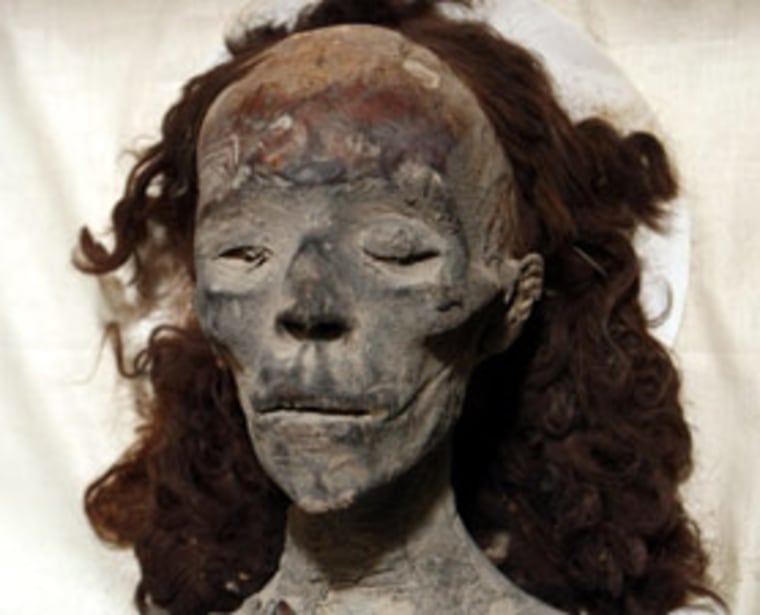King Tut’s grandmother, the powerful and beautiful Queen Tiye, might have had an unattractive flat wart on her forehead, according to a mummy expert.

The mummified face of King Tut’s grandmother, Queen Tiye. A high-resolution image reveals what may be a wart on her forehead, something not commonly found on the faces of Egyptian mummies. Corbis
King Tut’s grandmother, the powerful and beautiful Queen Tiye, might have had an unattractive flat wart on her forehead, according to a mummy expert.
Located between the eyes, the small protuberance was found on the mummy of the so-called Elder Lady (KV35EL). Boasting long reddish hair falling across her shoulders, the mummy was identified in February 2010 by DNA testing as Queen Tiye, the daughter of Yuya and Thuya, wife of Amenhotep III, and mother of Akhenaten.

The skin growth had gone unnoticed until Mercedes González, director of the Instituto de Estudios Científicos en Momias in Madrid, spotted it looking at the mummy during a visit to the Cairo Museum.
“I got a high resolution image of the mummy’s face from the Egyptian museum. From the enlargement, the small growth appears compatible with a flat wart or verruca plana,” González told Discovery News
Slightly raised, flat and smooth, these harmless bumps of various colors are hyperplastic epidermal lesions produced by papilloma viruses (HPV). They usually occur on the face, neck and back of the hands.
However, flat warts are not commonly found on the face of ancient Egyptian mummies.

“Until now I haven’t seen anything similar,” González said.
The wife of the 18th dynasty King Amenhotep III, the mother of the heretic pharaoh Akhenaten and grandmother of King Tut, Tiye (who lived from 1415 to 1340 B.C.), is one of the most intriguing women in Egyptian history.
Described by her husband as “the lady of grace, sweet in her love, who fills the palace with her beauty, the Regent of the North and South, the Great Wife of the King who loves her,” she was the most influential woman of Amenhotep III’s 38-year reign.
Tiye sat by the king as an equal when portrayed in statues — an achievement unparalleled in that time — and appeared to be much loved by her husband.
The wealthy Amenhotep III erected a number of shrines for his queen, built her a palace, a white sandstone temple in Nubia, land of her ancestors, and even a monumental artificial lake, Lake Tiye, for her excursions in the royal barge.
“It has been quite a surprise to find a flat wart between the eyes of such an Egyptian queen,” González said.
According to Frank Rühli, head of the Swiss Mummy Project and Center for Evolutionary Medicine at the University of Zurich, Switzerland, the protuberance is intriguing.
“It could be a flat wart, but we can’t tell for sure. Pure fibroma (a fibroid tumor) would be also possible. It would be very interesting to take a sample for histology and DNA,” Rühli told Discovery News.
Although the mummy undoubtedly has a small growth on the forehead, Salima Ikram, professor of Egyptology at the American University in Cairo, is more cautious about labeling the growth — or even the mummy.
“I call her the possible Queen Tiye, as there is some debate as to the attribution. And I think that without further study one should not dismiss the idea that it was a mole that got flattened during mummification,” Ikram told Discovery News.





